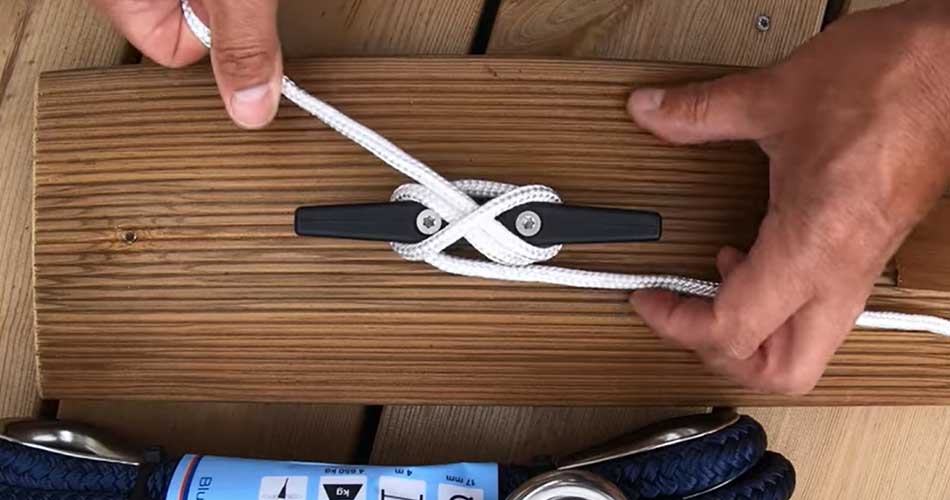These strong metal fittings are typically found in harbours, marinas, and along coastlines around the world, and play a crucial role in maintaining the stability and safety of watercraft and sailboats when they need to be moored.
Functions and uses
Cleats are designed to withstand the traction and pressure of sailboats of varying sizes as well as weather conditions. Their typical shape consists of a horizontal spar with a series horns on which mooring lines can be secured. These horns help to prevent the ropes from slipping, ensuring stable and reliable mooring.
Learn to tie a cleat hitch
Follow these simple steps to tie a cleat hitch:
- Step 1: Place the rope around the farthest horn.
- Step 2: Continue so that the rope takes half a turn around the cleat. You need to take half a turn so the hitch can lock while under load.
- Step 3: Cross the rope over the cleat.
- Step 4: Now turn the rope under the cleat.
- Step 5: Cross over the cleat once more.
- Step 6: Make a loop where the free end is at the bottom.
- Step 7: Place the loop around the cleat after you have driven the rope to ensure that the free end is locked.
- Step 8: Finally, tighten and organise the ropes on the deck.
The hitch should look the same as shown in the picture. The hitch can be used both for mooring and to secure the mainsail halyard to the mast.

Safety and maintenance of cleats
Proper maintenance of cleats is essential for their efficiency and service life. It is recommended to regularly inspect cleats for rust, corrosion, or damage to ensure that they remain in good condition. In addition, it is important to ensure that cleats are firmly secured to the surface to prevent them from slipping or failing during use.
Biltema’s cleats
A cleat is used for securing mooring ropes, sail lines and halyards. Below you will find Biltema’s range of cleats for boats and for safely mooring your boat. We offer several cleat sizes, and our cleats are produced in black nylon, which means there is no risk of them rusting.
Why pay more for mooring equipment?